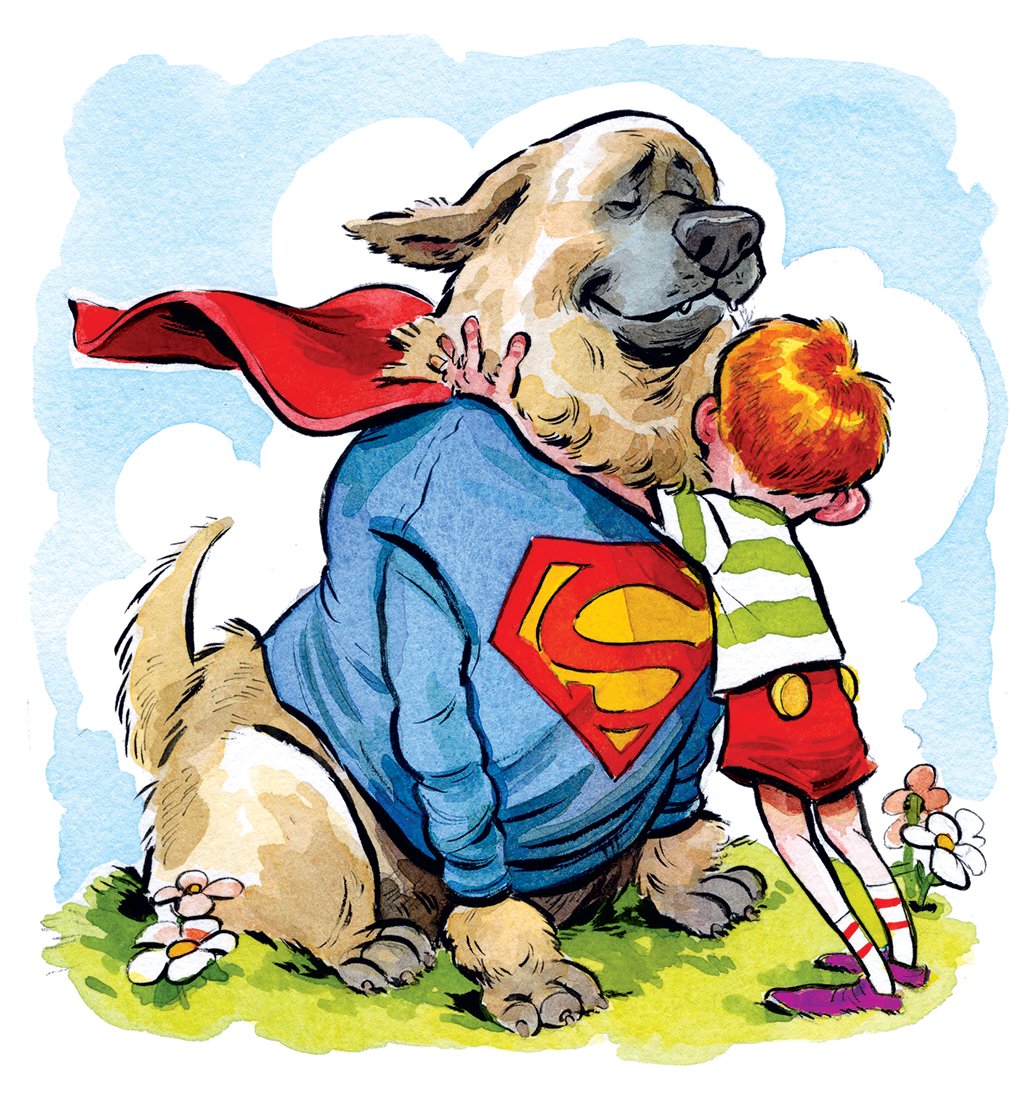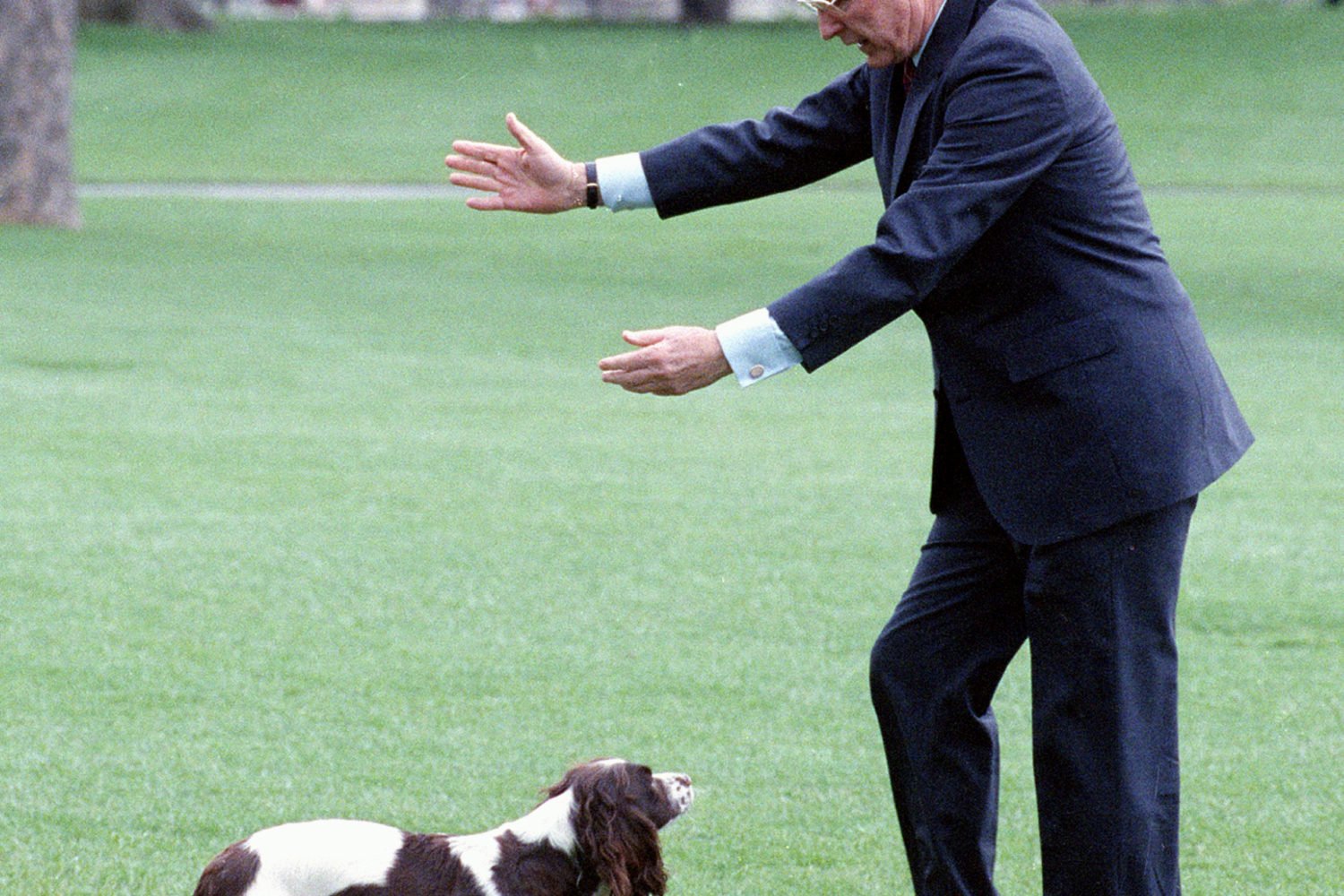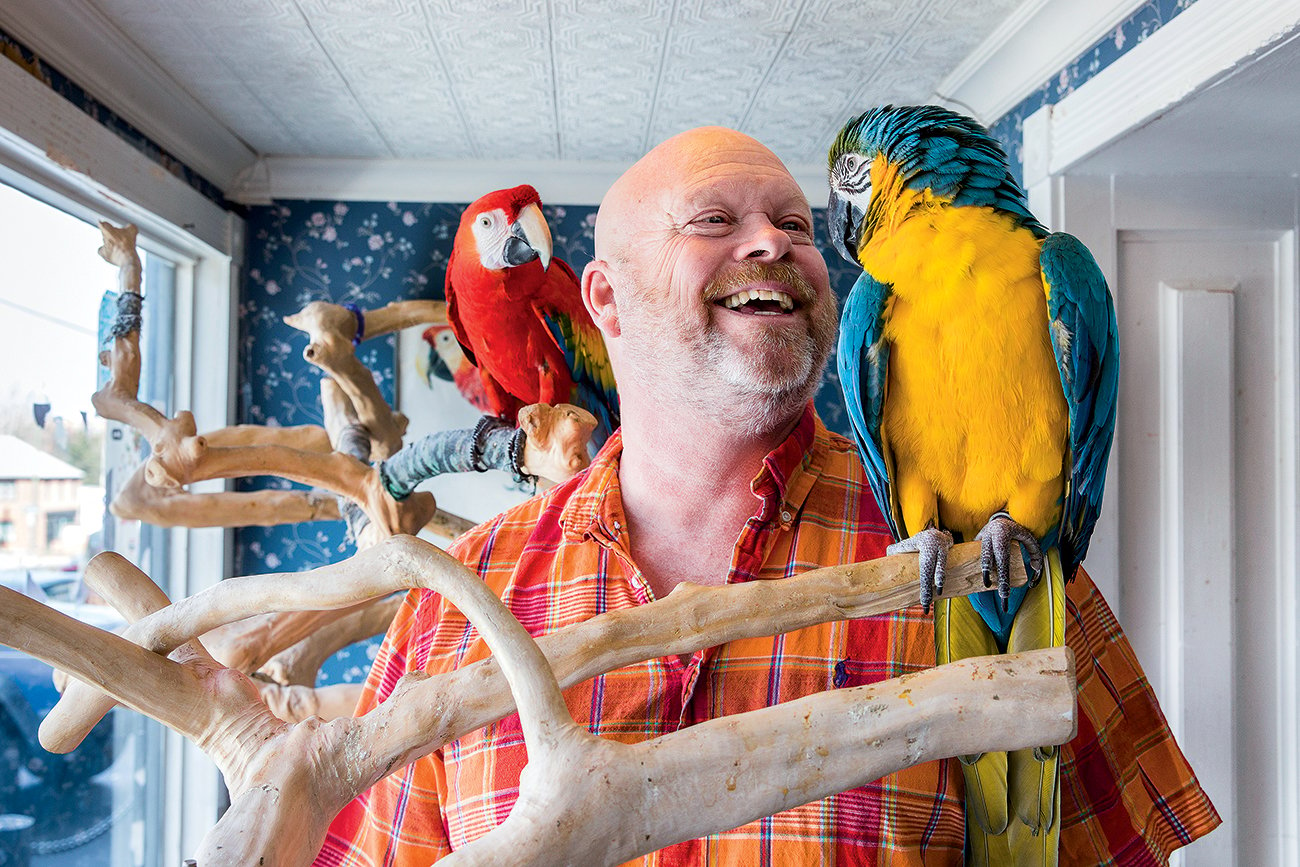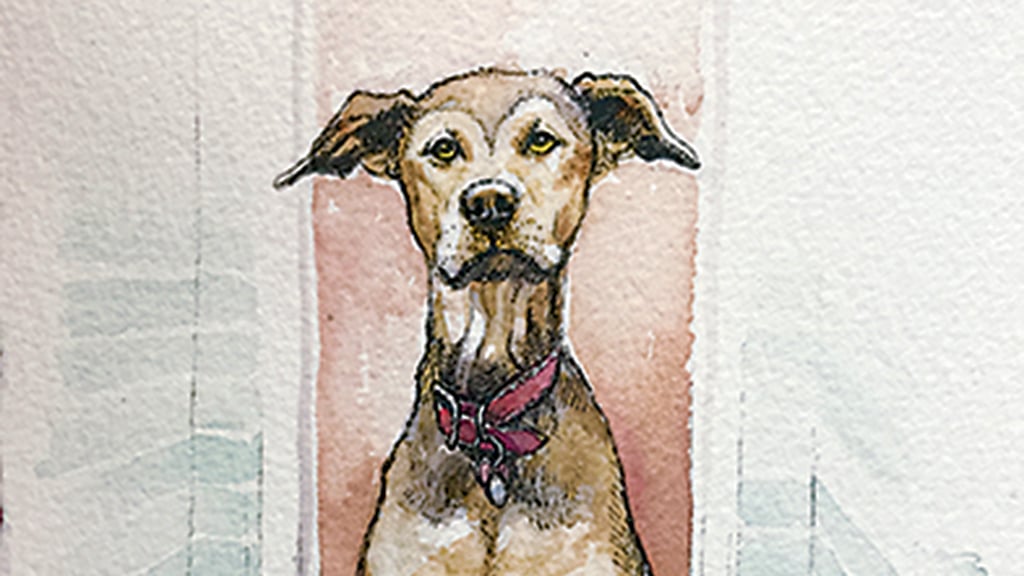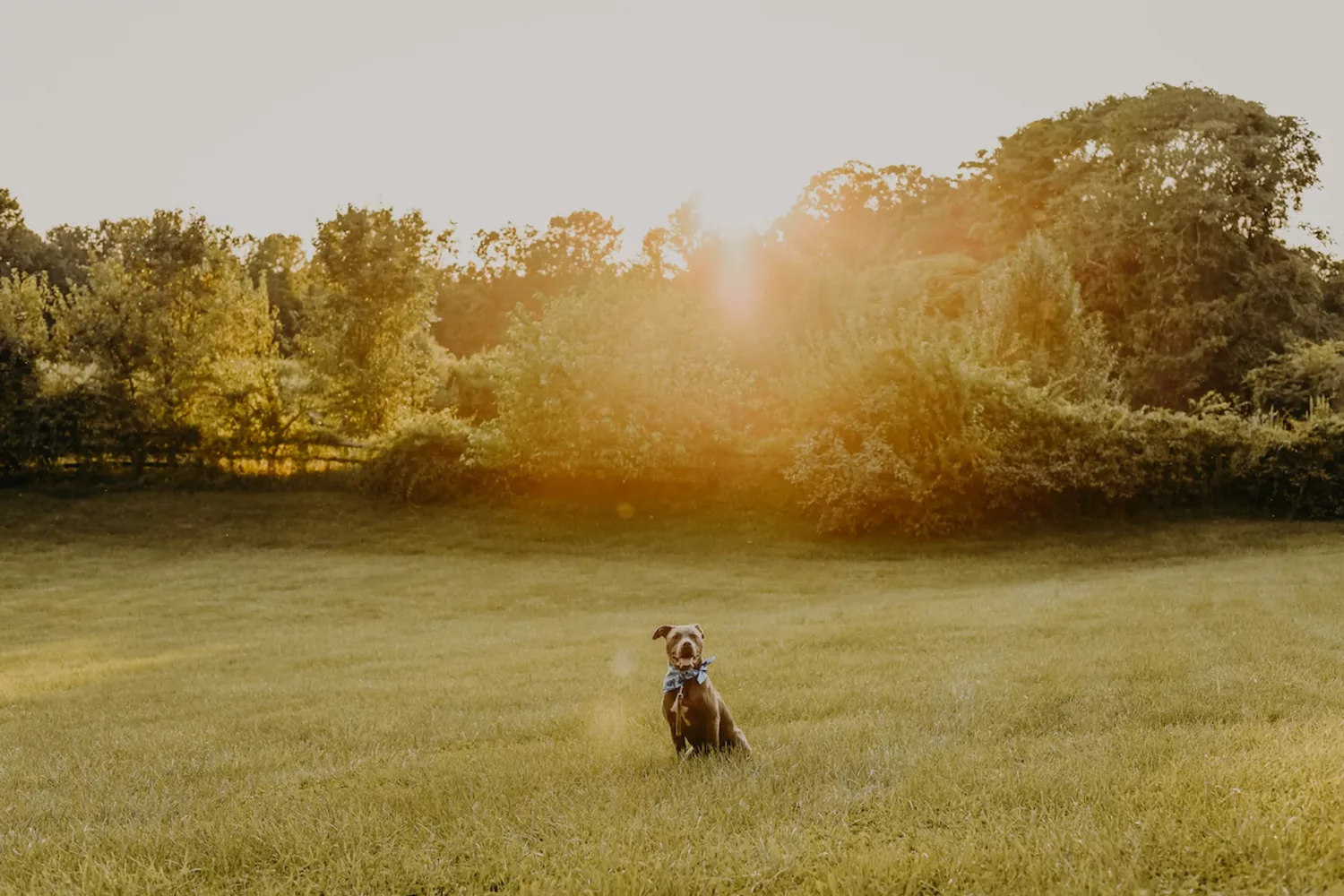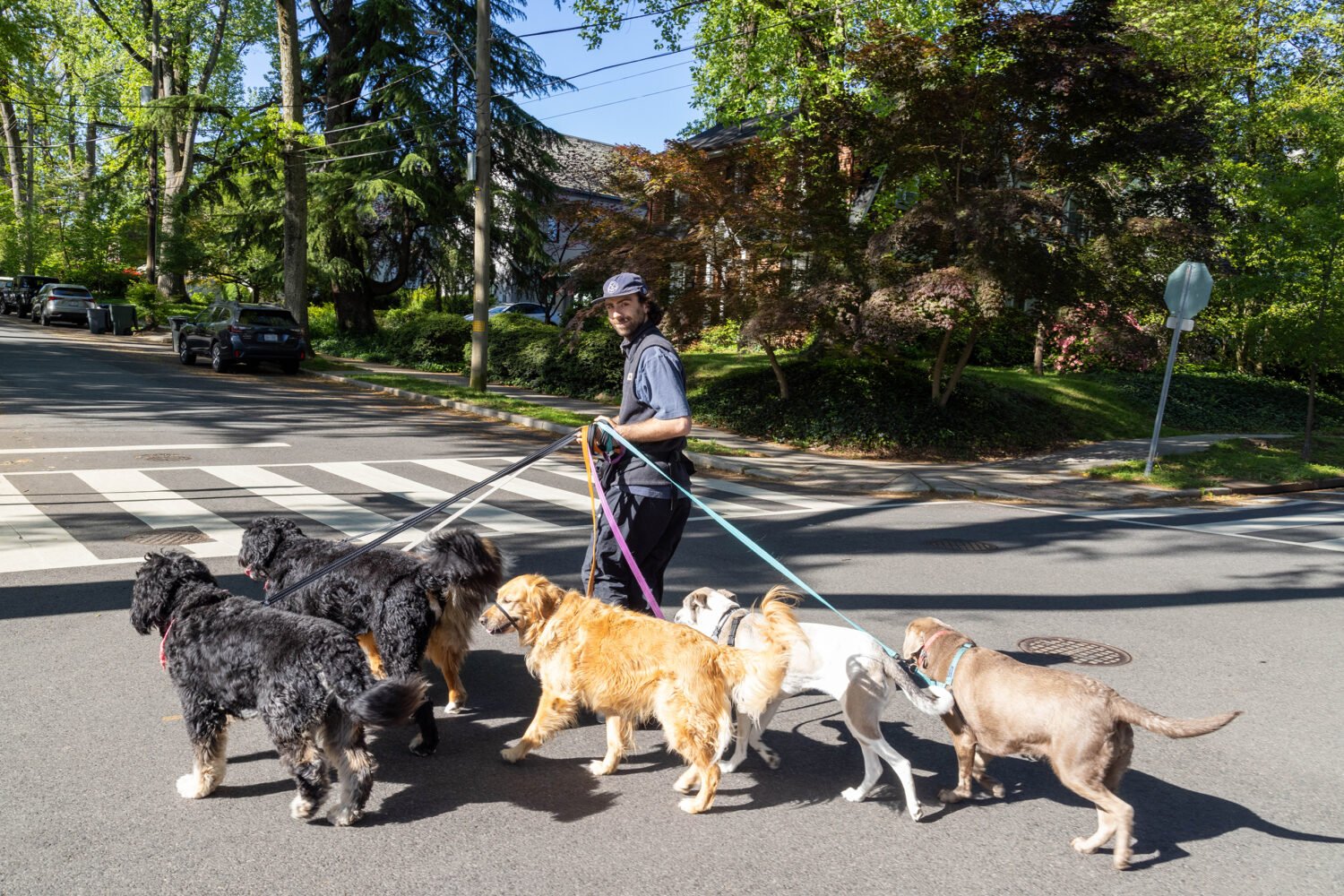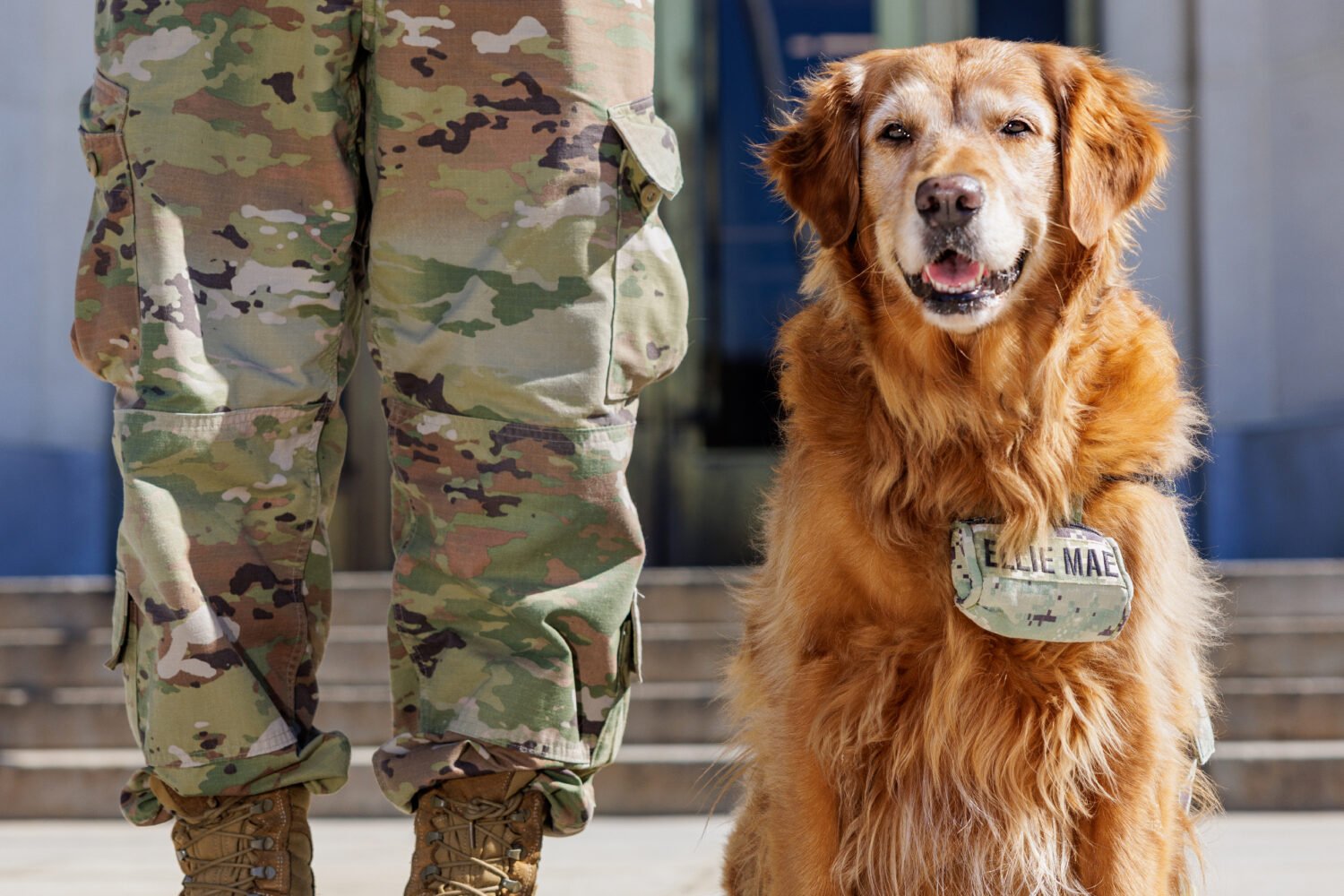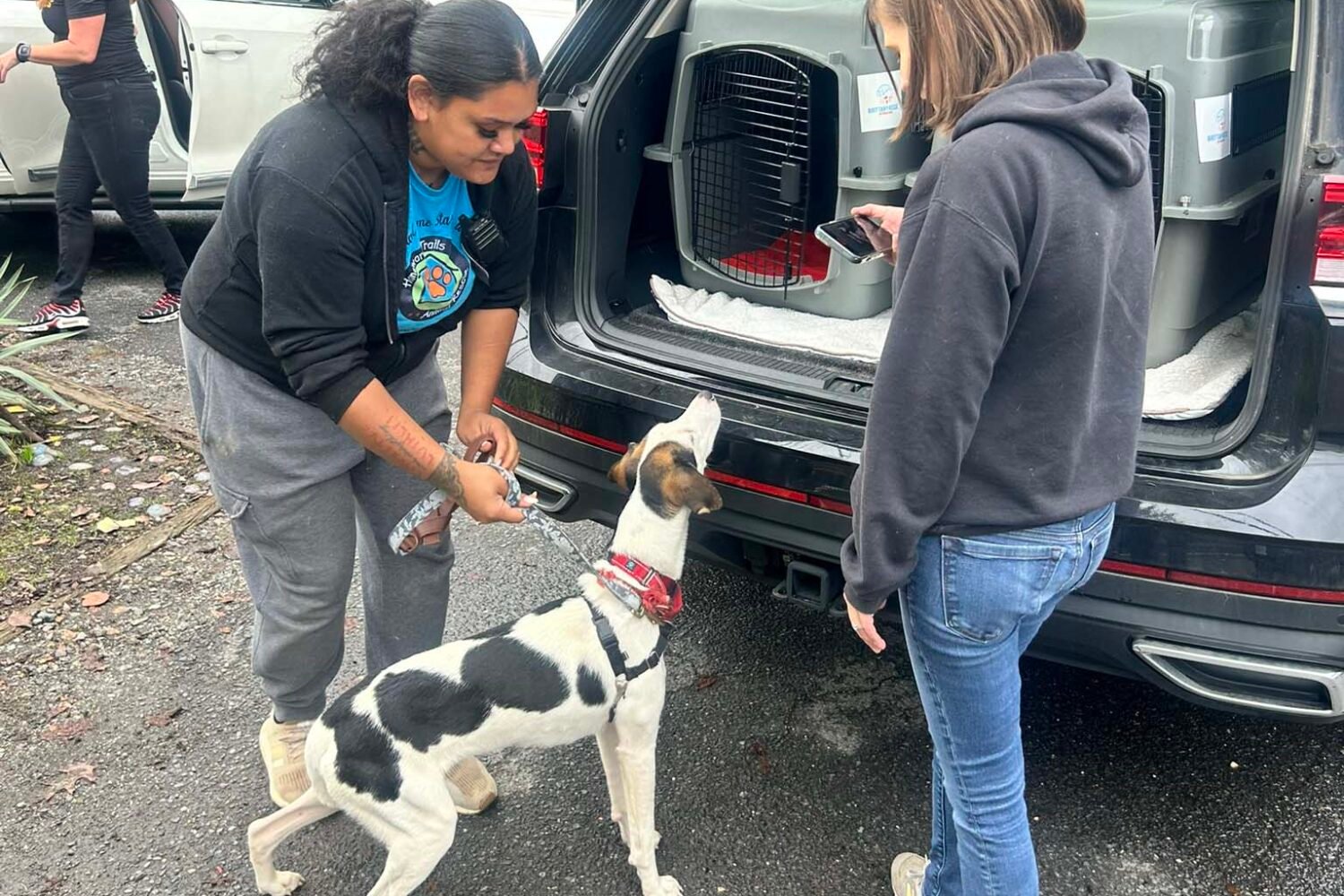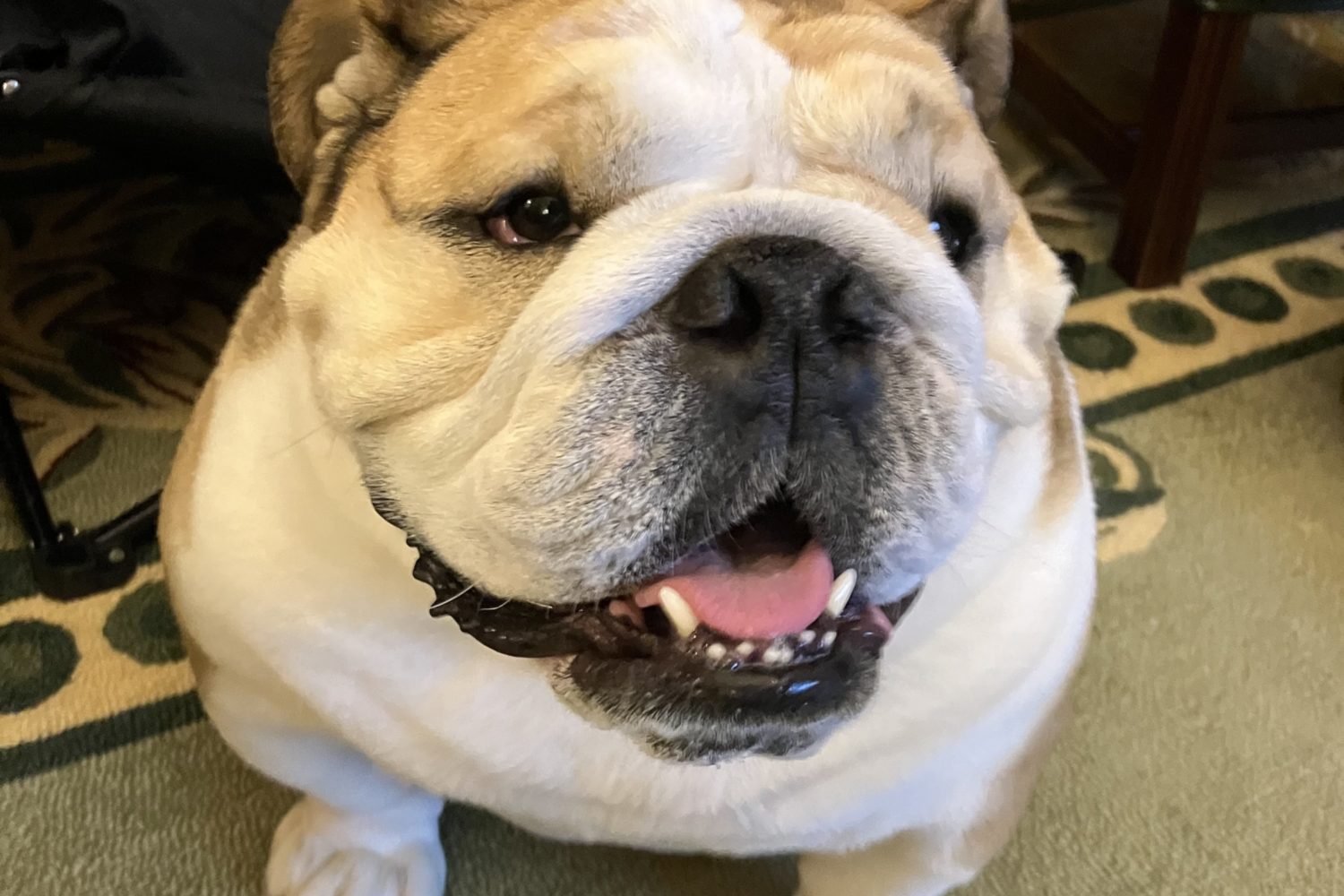On a blustery day in January, Aslan the Leonberger—as his business card reads—plods along the Navy Yard Riverwalk in Southeast DC. Icy wind ruffles the fur on his large, Clydesdale-like feet, and every few minutes he pauses for a mouthful of snow. It’s an off-duty day for Aslan. But with short notice, he could be called to work, responding to a crisis with 158 fluffy pounds of something we humans need a lot of these days: comfort.
Aslan and his partner, Jen O’Keefe, are a comfort-dog team at Hope Animal-Assisted Crisis Response, a national organization founded in 2001 after dogs helped console survivors and witnesses of a school shooting in Oregon. Since then, Hope has grown to more than 300 certified teams across North America, responding to crises and disasters including major hurricanes, wildfires, mudslides, and shootings. To join, the human-and-dog team must be active members of an approved therapy-dog organization. Hope then requires that they pass a three-hour screening evaluation and attend a three-day workshop with specialized training in crisis response.
Hope teams monitor the news for crises that may require a deployment, though they deploy only after a formal request, which often comes from the Federal Emergency Management Agency or the Red Cross.
O’Keefe, an emergency veterinarian at VCA SouthPaws Veterinary Specialists & Emergency Center in Fairfax, is one of about a dozen Hope members in the Washington area. She volunteers with Aslan (who is six and named for the lion in The Lion, the Witch and the Wardrobe) and her other Leonberger through PAL (People. Animals. Love.), a DC nonprofit that organizes pet visits to hospitals, nursing homes, and schools. After she began volunteering, O’Keefe saw a man with dementia light up when he interacted with Aslan. “I was hooked from there,” she says. “I thought, ‘We should be doing this every day.’ ”
The team was certified by Hope in 2015. Shortly thereafter, they were called to the Navy Yard, where a shooting false alarm had set off PTSD in a number of employees who had witnessed the 2013 incident, in which a gunman had killed 12 people. During their first year with Hope, O’Keefe and Aslan also went to Appomattox, Virginia, to soothe tornado survivors, and White Sulphur Springs, West Virginia, after devastating floods—where they encountered people who had lost homes, family members, and pets.
“At one point, we were walking from a church to a distribution site, and a man walked up and gave Aslan a hug and then started crying,” O’Keefe says. She later learned that the man had watched his wife die in their burning house, unable to save her. “I can’t do anything to give this man his wife or his house back, but my dog can make him feel better for the moment.”
Hope welcomes all sizes and breeds of dog, as long as they’re confident and calm in any situation. But the best, says organization leader Janet Velenovsky, are those who are indiscriminate in their attention-giving. “Some dogs just have it,” she says. “They’re almost flirting with you from the moment you meet them.” She reminds volunteers to let their dogs take center stage during a crisis, rather than doing too much talking. She tells them, “You’re just the chauffeur. The dog does the work.”
Sheila Consaul and five-year-old golden retriever Lucy joined Hope in 2016. In August, they drove to Charlottesville after riots incited by a white-supremacist rally. They made stops at a firehouse and a crisis command center, offering canine comfort to those who’d been on call round-the-clock for three days.
Most of Hope’s deployments in 2017 were related to the destructive hurricane season. While some teams went to the storm zones, Consaul and Lucy visited FEMA headquarters in Washington, where employees had been working 12-hour shifts, day and night.
Lucy performed tricks for treats, which got their minds off the gravity of the situation. After deployments, the dog is exhausted. “You wouldn’t think all that love-giving would be so tiring,” Consaul says, “but it is.”
This article appeared in the March 2018 issue of Washingtonian.

